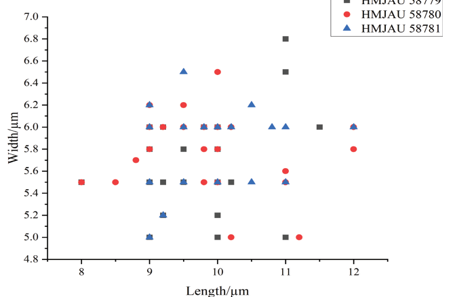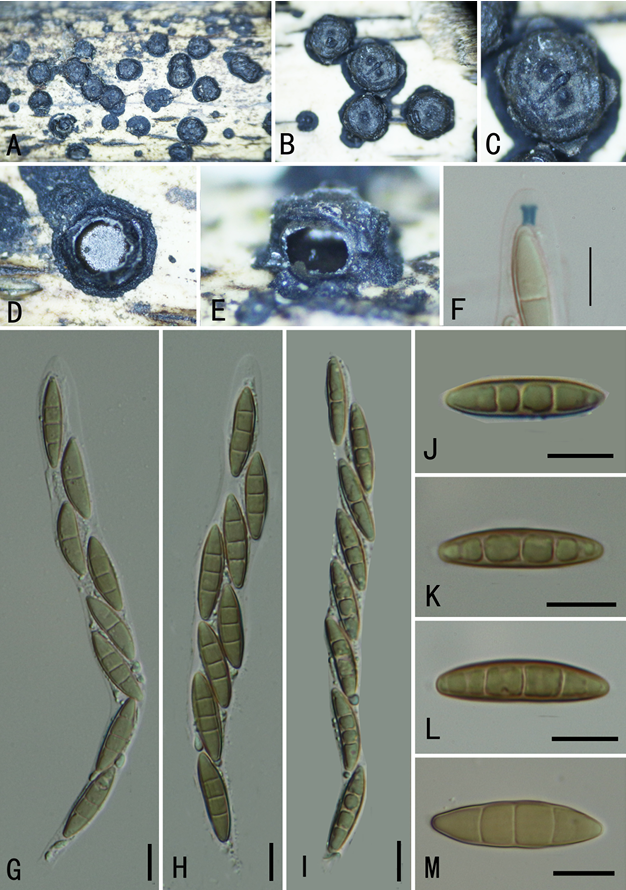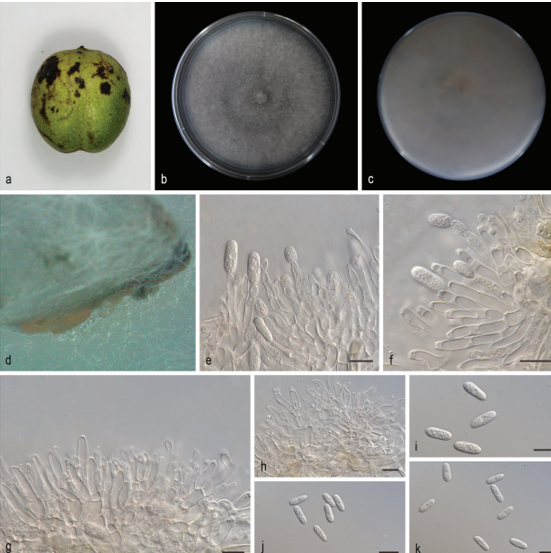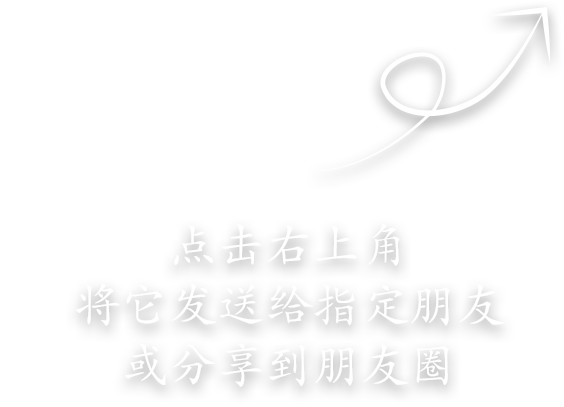Helicascus chiangraiensis Z.L. Luo, J.K Liu, H.Y. Su & K.D. Hyde 2020
Index Fungorum number: IF552003; Facesoffungi number: FoF02019
Holotype: CHINA, Guizhou Province, Guiyang City, Tongxin, Yan Lou, on dead wood submerged in an inland tank, 17 June 2018, M.C. Samarakoon, SAMC160 (MFLU 19–2103; HKAS 102391), living culture MFLUCC 20–0092.
Morphological description
Sexual morph: Ascomata 200–290 μm diam, 250–400 μm high (x̅ = 250 × 325 μm, n = 5), solitary, scattered, black, immersed, unilocular, globose to subglobose, ostiolate. Peridium 34–52 μm, subhyaline to dark brown, composed of several layers of pseudoparenchymatous cells, outer layer dark brown, with thick-walled cells, arranged in a textura angularis, inner layer hyaline with flattened, thin-walled cells. Hamathecium composed of 1.8–2.4 μm (x̅ = 2.1 μm, n = 20) wide, septate, hypha-like pseudoparaphyses, slightly constricted at the septa, embedded in a gelatinous matrix. Asci 78–110 × 13–20 μm (x̅ = 93.5 × 16.9 μm, n = 20), 8-spored, bitunicate, fissitunicate, clavate, apically rounded, dehiscent, endoascus narrow, coiled within ectoascus, ectoascus forming a long tail-like extension. Ascospores 19.5–32 ×
5.5–8.7 μm (x̅ = 26.6 × 7.5 μm, n = 20), uni to bi-seriate and partially overlapping, ellipsoidfusiform, verruculose, upper end narrowly rounded, lower end tapering, slightly curved in side view, with 2–4 large refractive guttules, 1-euseptate, septum submedian, hyaline when young, becoming brown when mature, thick-walled, verruculose, slightly constricted at the septum, surrounded by a 2.9–5.2 μm (x = 4.1 μm, n = 10) wide sheath. Asexual morph: Undetermined.
Culture characteristics – Ascospores becoming blackish brown and germinating on PDA within 15 h. Colonies on PDA reaching 13–15 mm diam. after one week at 25°C, circular, undulate margin, smooth and effuse surface, yellowish white, reverse yellowish brown.
Habitat: On dead wood, submerged in freshwater.
Distribution: In China.
GenBank Accession: ITS: MT425059; LSU: MT435500; SSU: MT435503; TEF1: MT462701
Notes: Helicascus chiangraiensis was introduced by Luo et al. (2016) on decaying wood submerged in a pond from northern Thailand. The species is characterized by unilocular ascomata, coiling asci and verruculose ascospores with a mucilaginous sheath. The specimen in this study (MFLU 19–2103) is similar to H. chiangraiensis. In addition, the molecular analysis showed that our strain clusters with H. chiangraiensis with high statistical support (99 % ML, 1.00 PP; Fig. 14). The base pairs comparisons of LSU and TEF1 sequences also show 100 % similarity among MFLU 15–0084 and MFLU 19–2103. Our isolate (MFLU 19–2103) is the first record of H. chiangraiensis from China.
Reference: Brahmanage RS1,2,3, Dayarathne MC6, Wanasinghe DN4,5 et al.
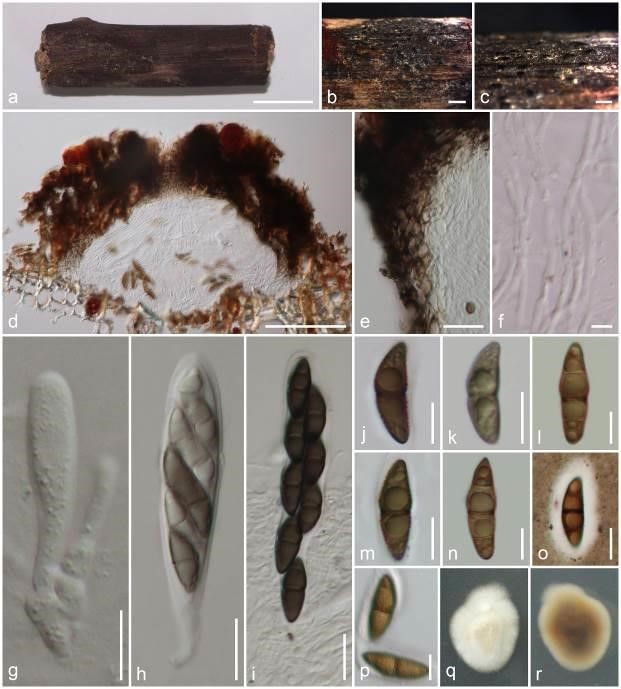
Helicascus chiangraiensis (MFLU 19–2103). a–c Ascomata on the substrate. d Cross section of ascoma. e Section of the peridium. f Pseudoparaphyses. g–i Asci. j–o Ascospores (o in Indian ink). p Verruculose ascospores. Culture grow on PDA q. upper side, r. reverse side. Scale bars: a = 1 cm, b = 1000 μm, c = 500 μm, d = 100 μm, e, h, i = 20 μm, g, j–p = 10 μm, f = 5 μm


